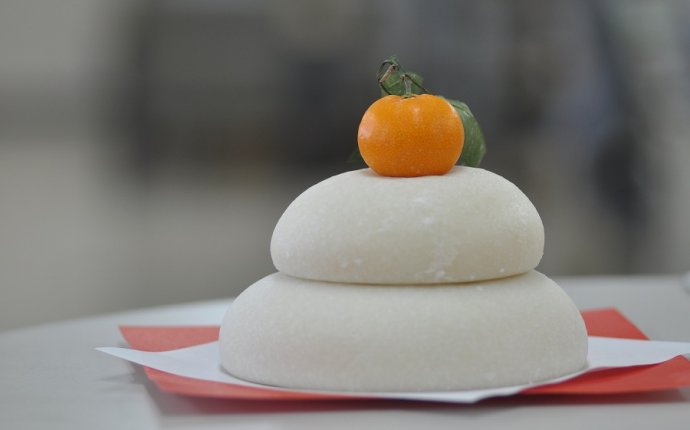
Does japan celebrate New Years
 Visit Your Family. Many Japanese people return to their hometown to celebrate the New Year with their family.
Visit Your Family. Many Japanese people return to their hometown to celebrate the New Year with their family.
Decorate Your House. Buy or make a New Year`s wreath from rice straw and lucky talismans and hang it on your door. Kadomatsu (lucky pine) can be placed by the door, a maneki neko (lucky cat) inside the house, or a kumade (lucky rake) at your business place.
Traditionally, mochi is pounded from cooked rice, but it might be easier to make it from mochigome. Mochi can be coated with kinako (soy powder), satō-jōyu (a sweet shoyu sauce), goma (a sesame paste), an (azuki bean paste), or made into a kagami mochi for display near your kamidana.Have a Bonenkai (Year`s End Party). This could be in a tatami mat room with low tables or a western style restaurant. Consider serving Japanese foods like sashimi, soba, red fish soup, fugu, tempura, fish eggs, rice, or sake. It is traditional to never fill your own cup, but instead fill your friends’ cups when they are empty. A speech would commemorate the occasion.
Send Nengajō to your friends. Nengajō are special New Year`s cards, often decorated with the Chinese zodiac animal of the new year. In Japan, the post office makes special effort of deliver Nengajō on New Year`s Day.
 Give Otoshidama. Traditionally, otoshidama were small gifts of appreciation given during New Year`s calling. In modern times, otoshidama is money given to children. The usual amount is around 5, 000 yen and it should be enclosed in a special decorated envelop. Merchants might give you oseibo (a small present of their wares).
Give Otoshidama. Traditionally, otoshidama were small gifts of appreciation given during New Year`s calling. In modern times, otoshidama is money given to children. The usual amount is around 5, 000 yen and it should be enclosed in a special decorated envelop. Merchants might give you oseibo (a small present of their wares).
Clean Your House. The end of the year is the traditional time to clean and purify your house and office. This is called susuharai or ousouji.
Eat Toshikoshi Soba on Dec 31st. This tradition originated in the Tokyo area. The long noodles symbolize a long life.
 Watch Kōhaku Uta Gassen on New Year`s Eve. This is a popular Japanese singing contest between a red team and a white team. If you can`t watch Kōhaku Uta Gassen, consider listening to Beethoven`s Ninth Symphony. It is commonly associated with New Year`s in Japan.
Watch Kōhaku Uta Gassen on New Year`s Eve. This is a popular Japanese singing contest between a red team and a white team. If you can`t watch Kōhaku Uta Gassen, consider listening to Beethoven`s Ninth Symphony. It is commonly associated with New Year`s in Japan.
10
Wait in line to ring the bell and worship at the shrine. After that, you might chat with your friends or buy talismans from the miko (shrine maidens). You might want an omamori, hamaya, kamifuda, or ema. Listen to the gagaku (court music). At a Buddhist temple, you can watch their bell rung 108 times at midnight. If there is an aerial firework display, consider watching it. 11
11
12
Make a Resolution. The New Year is considered a time for starting over.
13
Eat Osechi (New Year`s Foods). Some foods are considered lucky to eat around New Year`s. Many stores in Japan sell boxed meals including foods like kuri (chestnuts), datemaki (egg), kamaboko (fish cake), kobumaki (kelp), yakizakana (fish), kazunoko (herring roe), konnyaku (a vegetable), gobo (burdock), renkon (lotus root), kuromame (black beans), ise ebi (spiny lobster), and daikon (radish). Ozōni (mochi soup) and otoso (spiced sake) are also eaten during New Year`s.
14
Throw a New Year`s Party. Eat Japanese foods and play New Year`s trivia games. If it a family party consider playing hanetsuki (battledore), koma (tops), takoage (kite flying) or karuta (card game). See if you can purchase and serve the first fish caught this year.
15
Celebrate the `Firsts`. Attach special significance to the first of everything you do this year. Some traditional firsts are kakizome (first writing), hatsuyume (first dream), hatsumōde (first shrine visit), hakizome (first house cleaning), and hatsuburo (first bath).
16
Eat Mochi on Kagami Biraki. The rice cake ornament is broken and cooked. It is traditional to eat the kagami mochi on Jan. 11th.
17
Go to Dondoyaki. On Jan. 15th, take last year`s talismans and the New Year`s decorations to your local shrine. At the shrine, they will dispose of them in a bonfire. They might also serve amazaki (sweet sake). This rite ends the New Year season.













